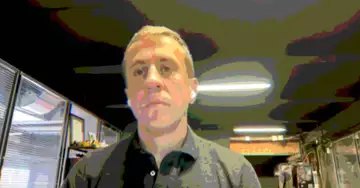The algorithm that powers the Waves Protocol's Neutrino USD (USDN) stablecoin needs to be adjusted in the wake of two recent decouplings from the U.S. dollar, founder Sasha Ivanov said Wednesday.
"We need to work on the algorithm," Ivanov said on CoinDesk TV's "First Mover." "And what's happening now is kind of inevitable, which is just a test of the whole system."
USDN is a dollar-based stablecoin backed by the protocol's Waves tokens, which are locked into smart contracts to mint USDN. USDN redemptions have the opposite effect: they destroy the stablecoin to release the supply of Waves tokens. The idea is to keep the USDN price constant at $1 per token. The risk is that there is not enough collateral to back redemptions during a crisis, which happened last month with the UST stablecoin and Terra's Luna token,
In April, USDN lost its peg to $1 and fell to 83 cents, while the WAVES token backing the stablecoin fell from $50 to $22 in a matter of days amid fears of price manipulation. That drop wiped nearly $200 million off USDN's market cap. In May, USDN crashed again as UST's collapse rocked the stablecoin world, and this time the USDN price fell to 88 cents.
Ivanov said that "some people made a lot of money on Waves."
Ivanov was asked how Waves differs from Terra, whose algorithmic stablecoin UST and Luna tokens collapsed in May, wiping out $60 billion in market value. The Neutrino protocol has "similar mechanisms" to Terra, "but is different," he said, referring to limitations on how many redemptions users can receive in a day.
Both projects were inspired by the Basis protocol, an algorithmic stablecoin that was eventually discontinued because of its potential use as a security tool, he added. (Luna's founder, Do Kwon, appears to have tried to revive Basis under a pseudonym before founding Terra, CoinDesk reported.)
Ivanov said a group of developers is making adjustments to USDN, but stressed that nothing has been changed at the moment. One change that is needed, he said, would be to "create an incentive for people to recapitalize USDN because the guarantee incentives are not enough."
Ivanov said USDN is not adequately backed, comparing it to fractional reserve banking in traditional markets: "Banks have been working with fractional reserve systems for centuries, and they're doing fine."
Nonetheless, he said it is better to be fully hedged and overcapitalized.
The USDN recently traded at a 1% discount to the U.S. dollar.
"This is the beginning of the process, and I think it will lead to the emergence of a very stable, stable coin," Ivanov said.
As part of the process, Waves has released a master DeFi revival plan to restore user confidence and functionality to the protocol.
"We have developers trying to make the stablecoin very stable," Ivanov said. "It's a very natural process, and we will be better off when we have developed some better algorithms."

